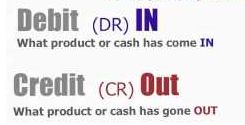Fritz Sybergs Vej 9
DK 8270 Hojbjerg
Scandinavia
info@dynamicbusinessplan.com


The Liabilities
The Balance Statement shows the Assets and the Liabilities in the company. This is about the liabilities.
The Liabilities can be divided into two different types:
- Money that the company has accumulated during the years
- Money that the company has borrowed or owes to creditors
At least at the end of every financial year a company will calculate the two types of liabilities. Together they make the sum of money which is available to the company at the end of a financial year. For instance at 31st December 2010.
Accumulated funds
The part of the liabilities which is the money that the company owns is usually registered on the following accounts:
- Owner´s Equity
Owner´s Equity
The Owner´s Equity is the company´s accumulated funds. It consists of money which was given to the company when it started. Probably the money came from the owner himself and/or his investors.
Money which the company itself has generated from its activities prior to the financial period will be registered here. For instance the profit generated in the company in 2010 will be transferred to Owner´s Equity.
If one year you lose money the amount will be deducted from Owner´s Equity.
Creditors
The money that the company owes to creditors could be registered on the following accounts:
- Bank loans – money borrowed from a financial institution
- Suppliers – goods received but not paid for
- Sales tax – tax owed to the government
- Staff tax – tax owed to the government
- Other Creditors – others the company owes money

Liabilities = Assets
When you add all the above mentioned Liabilities you get the total figure.
The figure must be the same as the total figure for the Assets.
This is due the accountancy system: The Double Entry System.
Example from a Balance Statement:
|
Assets |
Liability |
||
|
Cash |
7.000 |
Owners Equity |
10.000 |
|
Bank account |
4.000 |
Loan from Bank |
12.000 |
|
Equipment |
3.000 |
. |
. |
|
Stock |
8.000 |
. |
. |
|
Total |
22.000 |
Total |
22.000 |

The secret of getting ahead is getting started. The secret of getting started is breaking your complex overwhelming tasks into smaller manageable tasks, and then starting on the first one.
– Mark Twain, American Humorist and Author






























